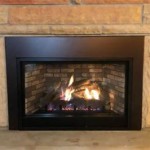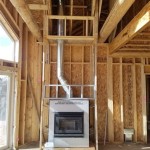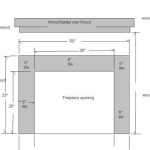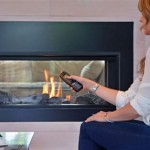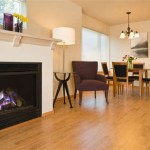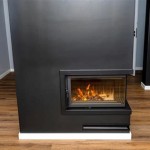Gas Fireplace Inserts With Fan: Enhancing Comfort and Efficiency
Gas fireplace inserts offer a convenient and efficient alternative to traditional wood-burning fireplaces. These inserts are designed to fit directly into existing fireplace openings, providing a clean-burning, controllable heat source. A significant enhancement to many gas fireplace inserts is the inclusion of a fan, which plays a crucial role in distributing heat throughout the room and improving overall heating efficiency.
This article will delve into the benefits of gas fireplace inserts equipped with fans, exploring their operational principles, energy efficiency, installation considerations, and maintenance requirements. The objective is to provide comprehensive information to aid in making informed decisions regarding the adoption of this heating technology.
Understanding the Functionality of a Gas Fireplace Insert with Fan
A gas fireplace insert with a fan operates on a fairly simple principle. The unit consists of a gas burner, decorative logs (often ceramic or refractory materials designed to mimic natural wood), a firebox, and a ventilation system. When the gas is ignited, it produces flames that heat the firebox and the surrounding components. The fan, typically a centrifugal or tangential blower, is strategically positioned to draw cool air from the room, circulate it around the heated firebox, and then expel the warmed air back into the living space. This forced-air convection spreads the heat more evenly and rapidly than relying solely on radiant heat from the flames.
The fan is usually powered by electricity and often features variable speed settings, allowing users to customize the airflow and heat distribution according to their preferences and the size of the room. Some models incorporate thermostat controls that automatically adjust the fan speed based on the firebox temperature, optimizing efficiency and preventing overheating. The fan's contribution is significant, as it prevents the heat from simply rising to the ceiling above the fireplace, instead forcing it to circulate horizontally across the room.
Without a fan, a gas fireplace insert primarily relies on radiant heat, which warms objects and people directly in its path. While radiant heat can be comforting, it is often less effective at heating an entire room evenly. The fan addresses this limitation by promoting convection, the transfer of heat through the movement of air. This process is particularly beneficial in larger rooms or spaces with poor air circulation, ensuring consistent and comfortable temperatures throughout.
The Advantages of Choosing a Gas Fireplace Insert with Fan
Selecting a gas fireplace insert with a fan presents several notable advantages over models without forced-air circulation. These benefits primarily revolve around improved heating performance, energy efficiency, and enhanced user comfort.
First and foremost, the fan significantly improves the heating efficiency of the insert. By actively circulating the heated air, the fan ensures that more of the heat generated by the gas burner is effectively transferred into the room. This reduces heat stratification, where warmer air accumulates near the ceiling while the lower portions of the room remain cooler. With the fan distributing the heat evenly, the thermostat can be set lower, resulting in energy savings. This is especially true in rooms with high ceilings or open floor plans, where heat stratification is more pronounced.
Secondly, a fan can also provide faster heating. The forced-air circulation allows the room to reach the desired temperature more quickly than relying solely on radiant heat. This is particularly beneficial during the initial heating phase when the fireplace is first turned on. The quicker heating time translates to increased comfort and reduced waiting periods.
Thirdly, the fan offers enhanced control over the heating process. Variable fan speed settings allow users to tailor the heat output to their specific needs. During milder weather, a lower fan speed can provide gentle warmth, while during colder periods, a higher speed can deliver more intense heating. This flexibility allows for fine-tuning the heating performance to optimize comfort and energy efficiency based on ambient temperature and personal preferences.
Furthermore, many modern gas fireplace inserts with fans incorporate smart features, such as programmable thermostats and remote controls. These features further enhance user control and convenience, allowing for scheduled heating cycles and adjustments from across the room. Some models can even be integrated with smart home systems, enabling remote control and monitoring via smartphone apps. These technological advancements contribute to a more user-friendly and efficient heating experience.
Installation, Maintenance, and Operational Considerations
Successful integration of a gas fireplace insert with fan involves careful consideration of installation requirements, routine maintenance procedures, and operational best practices. Correct installation is crucial for safe and efficient operation, while regular maintenance ensures long-term performance and reliability.
The installation process should always be performed by a qualified and certified technician. This is essential for ensuring compliance with local building codes and safety regulations. The technician will assess the existing fireplace opening, verify the compatibility of the insert, and properly connect the gas line and ventilation system. Improper installation can lead to gas leaks, carbon monoxide emissions, and other safety hazards. Furthermore, incorrect venting can significantly reduce the efficiency of the insert and potentially damage the unit.
Regular maintenance is also vital for maintaining optimal performance. The fan should be cleaned periodically to remove dust and debris, which can reduce airflow and efficiency. The burner should also be inspected and cleaned to ensure proper combustion. The flue or chimney should be inspected annually for blockages or damage. These inspections and cleaning tasks can often be performed by a homeowner, but it is recommended to consult with a qualified technician for more complex maintenance procedures.
Operational considerations include using the appropriate gas type (natural gas or propane) as specified by the manufacturer. It is crucial to never use the fireplace with the glass door open, as this can compromise safety and efficiency. Always follow the manufacturer's instructions regarding ignition, operation, and safety precautions. If any unusual odors or malfunctions are detected, immediately shut off the gas supply and contact a qualified technician for inspection and repair.
Noise levels associated with the fan can also be a consideration. While most modern gas fireplace inserts with fans are designed to operate quietly, some models may produce more noticeable noise, especially at higher fan speeds. Consider this factor when selecting a model, particularly if the fireplace is located in a bedroom or a quiet living space. Reading reviews and seeking recommendations can help identify models that are known for their quiet operation.
Power outages can affect the functionality of a gas fireplace insert with a fan, as the fan requires electricity to operate. In the event of a power outage, the fireplace will still produce heat through radiant heat, but the effectiveness will be significantly reduced. Consider investing in a backup power supply, such as a generator or a battery backup system, to ensure continued operation of the fan during power outages. This is particularly important in areas prone to frequent power disruptions.
The lifespan of a gas fireplace insert with a fan can vary depending on the quality of the unit, the frequency of use, and the level of maintenance. With proper care and maintenance, a high-quality insert can provide reliable heating for many years. Regular inspections and prompt repairs can help extend the lifespan of the unit and prevent costly replacements. Keep records of maintenance and repairs to facilitate future troubleshooting and servicing.
In summary, a gas fireplace insert with a fan can be a valuable addition to any home, providing efficient, controllable, and convenient heating. By understanding the functionality, advantages, installation requirements, and maintenance needs, homeowners can make informed decisions and ensure the optimal performance and longevity of their fireplace insert.

35 Ruby Traditional Intellifire Touch Direct Vent Fireplace Insert Blower And Remote Electronic Ignition Majestic

30 Ruby Contemporary Intellifire Touch Direct Vent Fireplace Insert Blower And Remote Electronic Ignition Majestic

Enviro E Series Gas Or Propane Insert Fireplace Fireplaces By Cameron

Chaska 34l Gas Fireplace Insert With Blower Log Glass Rock

Enviro S Gas Q1 Insert

White Mountain Hearth By Empire Comfort Systems Direct Vent Gas Fireplace Insert Loft

430 Mod Fyre By Fireplace Xtrordinair Higgins Energy Alternatives

Empire 29 Loft Small Vent Free Gas Fireplace 10 000 Btu Vflc10in32 Hvacdirect Com

Gas Fireplace Inserts Fireplacesdirect Com

Pleasant Hearth Universal Circulating Zero Clearance 42 In Ventless Dual Fuel Fireplace Insert Phzc42c The Home Depot
Related Posts

